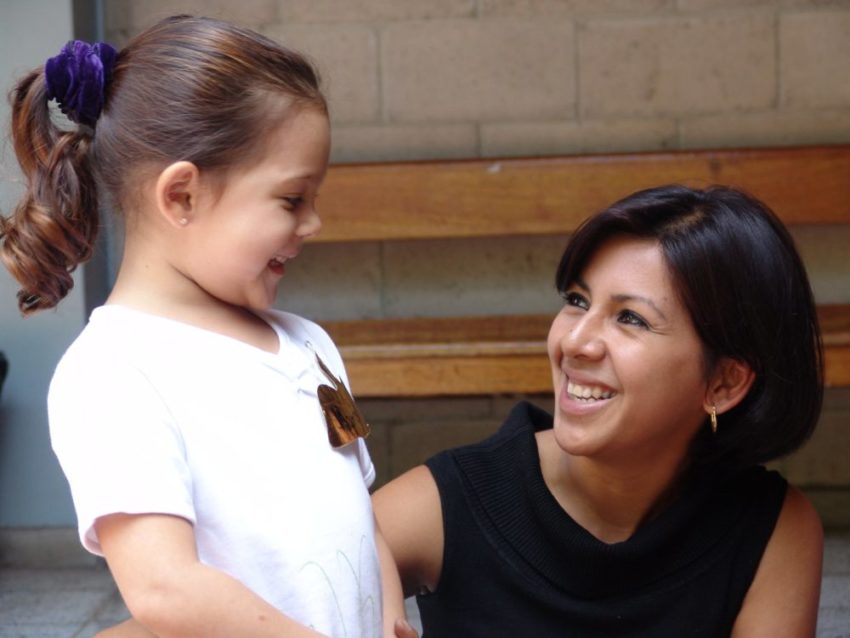Posts Tagged ‘Teacher Leadership’
Round 3: Looking Back, Looking Ahead
In our previous two posts (here and here), Sarah and Grant shared reflections on the past year and projects they are looking forward to in the coming months. To bring us home, Jessica shares lessons learned on working through complexity and opportunities to lead with appreciation.
What I learned: I have spent most of my career in education supporting and working in large bureaucracies, namely large urban districts and state education agencies. Just prior to joining Hendy Avenue I was in senior leadership in one of the largest school districts in Ohio. Each of the organizations I’ve worked with in the past have faced challenges, and I tended to chalk those up to organizational complexity, and the difficulty that comes with arriving at solutions when you must invest a large number of people and perspectives in the strategies. After spending my first year with Hendy working with diverse organizations and districts, I came to appreciate that the challenges I faced in past contexts are not so different from those faced by clients of all sizes. I’ve learned that it’s often not only the scale and bureaucracy that causes the challenges we face in K-12 education, and that we can learn a lot from organizations of different sizes and types in finding solutions. As we partner with our clients this year, we are excited to continue to bring lessons learned from all shapes and sizes of districts, states, schools and networks to arrive at solutions to problems.
What I’m excited about: I am so happy to get to continue to partner with Independence Mission Schools in Philadelphia. Having attended Catholic schools as a child, I have a great appreciation and admiration for the work IMS is doing for some of Philadelphia’s most deserving students. We learned a lot from IMS’ leaders and teachers as we supported them last fall to implement their new instructional framework, and to modify that framework to fit their Catholic culture. Now, I’m excited to continue to support IMS leaders as they deeply invest in teachers through teacher leadership. This project has been a welcome opportunity to explore how others are solving a problem, learn more about the context, strengths and opportunities in IMS schools, and devise a program that makes a difference for teachers, and students, across the network.
Making Teacher Leadership a Success
In our first post on teacher leadership, we noted a few key ideas and benefits of extending the impact of teachers. Here, we break down three suggestions for launching a new teacher leadership initiative as well as criteria to measure success and common pitfalls to avoid.
How do you launch a successful teacher leadership program?
Our research and experience suggest three critical steps to starting a new approach to teacher leadership:
- Start with a goal in mind: Avoid launching a new program without a clearly defined, and important problem to solve. For example, if your district finds that teachers are not feeling valued in decision making, a teacher leadership program aimed at increasing teacher voice would be more appropriate than a peer coaching initiative.
- Identify the right “strand” of teacher leadership: Teacher leadership can be instructional (coaching, learning communities, etc.), associative (organizing, community building, etc.) or policy focused (advocacy, implementation feedback, etc.).
- Build a leader profile and plan for their development: Identify the specific knowledge, skills, and mindsets teacher leaders will need to be successful. Consider the personal or professional goals teacher leaders could be working towards and how they’ll be held accountable to meeting the expectations for their role.
Criteria for Success
Successful implementation of any initiative requires specific benchmarks in order to direct action, mobilize energy and inspire persistence. At the same time, setting goals is not enough. In addition to guidance, training and coaching, people need the capacity to act.
Here are four criteria that leaders can use to achieve success:
- Alignment: Ensure teacher leadership priorities are aligned with overall school priorities.
- Goals: Collaboratively set and track progress against clear, measurable goals for teacher leadership.
- Systems of Support: Identify a clear, cohesive system of support for teacher leaders to drive their professional growth and success.
- Schedules: Carefully plan and agree upon scheduling to guarantee teacher leaders have the time to succeed.
Common Pitfalls
The work we do as educators is difficult. Leaders often find themselves constrained with limited budgets and capacity to drive change; while teachers often wish for another hour in the day to make that additional phone call home or photocopy for the next day.
In launching a teacher leadership program or opportunity, look for, and avoid the following common pitfalls:
- Temporary: Teachers notice when positions are tenuous. Avoid funding sources that may not persist long enough to influence recruitment and retention.
- Detached: Roles that prevent teacher-leaders from spending a portion of their time teaching students make it much harder for them to keep teaching skills fresh and stay connected to student needs.
- Low reach: Many teacher-leadership roles actually reduce the number of students for whom the best teachers are responsible. If fewer students benefit from the best teachers, fewer will make the learning gains these teachers induce.
- Short on time: Too many teacher-leader roles are heaped on top of teachers’ other responsibilities. Co-planning, modeling, co-teaching, coaching, and collaboratively adjusting instruction based on student data require more planning time.
- Low or no pay: Most teacher-leader roles are low- or no-pay roles; this sends the message that teacher leadership is expendable, rather than essential to schoolwide success.
- Low authority, low accountability: Teacher-leaders’ formal authority and evaluations rarely align with responsibility for wider student spans and a positive impact on peer and students success.
How has has teacher leadership made in impact in your school or career? What led to success? What should be avoided? Sound off in the comments!
Sources:
- York-Barr, J. and Duke, K. “What do we know about teacher leadership”. Review of Educational Research. (2004)
- Karen Seashore Louis, Kenneth Leithwood, Kyla L. Wahlstrom, and Stephen E. Anderson, “Investigating the Links to Improved Student Learning,” University of Minnesota (2010).
- Louis, Leithwood, Wahlstrom, and Anderson, “Investigating the Links to Improved Student Learning”
- Leading Educators and the Aspen Institute, “Teacher Leadership that Works,” Aspen Institute (2014).
- C. Kirabo Jackson and Elias Bruegmann, “Teaching students and teaching each other: The importance of peer learning for teachers,” National Bureau of Economic Research No. 15202 (2009);
- Cory Koedel, “An empirical analysis of teacher spillover effects in secondary school,” Economics of Education Review, Vol. 28, 682–692 (2009);
- Kun Yuan, “A value-added study of teacher spillover effects across four core subjects in middle schools,” Education Policy Analysis Archives, Vol. 23, no 7 (2015).
Teacher Leadership: More than a Buzzword
The education field loves jargon. From “21st-century learning” to “college and career readiness”, new jargon enters our vocabulary as priorities and policies shift. Recently, we’ve heard one buzzword repeatedly swirling across blogs and conferences: Teacher Leadership.
What is teacher leadership?
In What do we know about teacher leadership?, Jennifer York-Barr and Karen Duke from the University of Minnesota reviewed two decades of literature and define teacher leadership as “the process by which teachers, individually or collectively, influence their colleagues, principals, and other members of the school community to improve teaching and learning practices with the aim of increased student learning and achievement”
A few key ideas about teacher leadership stand out:
- It is a process, not just a position. Anyone, at any level of an organization, can demonstrate leadership. Formal roles can be helpful, but are not the end goal.
- It is about influence beyond the self—whether that be on peers, managers, subordinates, etc.
- It is ultimately about increased student learning and achievement.
Why teacher leadership?
Leading Educators put it best: “When administrators and teachers share leadership, teachers’ working relationships are stronger, student achievement is higher, and highly effective teachers can be retained in the schools that need them. Highly effective teachers can have substantial spillover effects on their peers’ performance.”

Much like a lesson or unit plan, teams should start with the end in mind: identify the specific rationale behind investments in opportunities for teacher leadership. School systems may pursue teacher leadership to:
- Further develop top teacher talent
- Help other teachers improve
- More effectively implement key priorities (e.g., curricula, standards)
- Build a pipeline to the principalship
- Distribute leadership within schools and make principals’ span of supervision manageable
- Increase highly effective teachers’ impact on student learning
- Increase teacher retention by investing in them and their ideas
Once a school, district, or network identifies why they want to invest in teacher leadership–including specific measurable goals–it becomes critical to design initiatives that will maximize that investment.
Intrigued? In our next post, we will share best practices for successfully launching teacher leadership initiatives. Hungry for more? Check out The Network Effect from Chiefs for Change and Public Impact’s Opportunity Culture.



